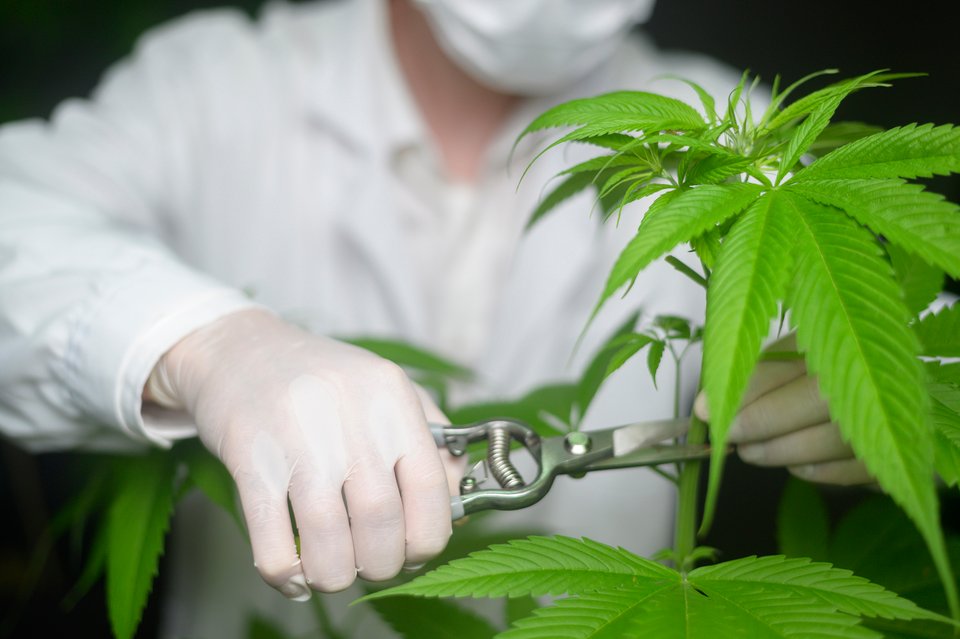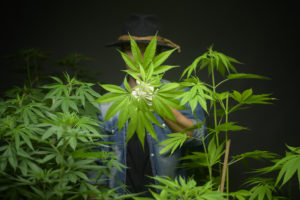
Trimming cannabis is enjoyable for some individuals because it allows them to engage with their plant, particularly if they have been nurturing it for seasons. However, some people dislike the trimming process since it is so boring.
Whatever kind you are growing, remember that simply cutting a few plants may take hours, if not days. Make sure you have some nice CDs or audiobooks on hand, and it never hurts to also bring a buddy or two on hand to assist. You’ll get enough of the buds left over.
What is the Significance of Cannabis Trimming?
During pruning, cannabis plant buds are removed, as well as stems, branches, sugar leaves, as well as fan leaves. These parts bring with them a rough smoking experience and do not have a significant amount of trichomes, even though some are present.
During wet pruning, eliminating every one of the unwanted plant debris decreases the amount of moisture within the buds, providing for a much more equal dryness.
Once the cannabis plant gets trimmed, it has a neater, more consistent look and offers more package attractiveness.
What is the Significance of Cannabis Trimming?
During pruning, cannabis plant buds are removed, as well as stems, branches, sugar leaves, as well as fan leaves. These parts bring with them a rough smoking experience and do not have a significant amount of trichomes, even though some are present.
During wet pruning, eliminating every one of the unwanted plant debris decreases the amount of moisture within the buds, providing for a much more equal dryness.
Once the cannabis plant gets trimmed, it has a neater, more consistent look and offers more package attractiveness.
Two Types of Cannabis Trimming
Trimming cannabis plants may be done using two methods, each having advantages and disadvantages.
Wet Trimming
Wet trimming is done all at once: you chop the plant apart, clip buds off its branches, prune any ready bud, and afterward lay them onto a drying station to settle for the rest of the week.
Pros
It is simpler to remove the sugar leaves along with the fan leaves since they wither and get dried up during a dry trimming operation. Drying can occur more rapidly with reduced moisture-filled leaves clinging to the blooms; this might be beneficial in humid locations wherever mold seems to be a worry. When you’re short on room, wet trimming eliminates a large portion of the crop from the start, eliminating the need to hang entire plants out for drying.
When wet trimming, you’ll end up with a finished result that’s not only more compact but also more visually beautiful. Many claim that since buds are sticky whenever touched, trichomes stay intact, preserving terpenes plus tastes throughout the finished production.
Cons
Wet trimming gets quite sticky. If you didn’t know, trichomes will stick to almost anything, including your fingertips, the trimming shears, and anything else. Gloves are highly suggested when wet trimming, and either rubbing alcohol or oil may be required for this task.
Dry Trimming
Dry trimming entails cutting out the whole plant and leaving it hanging to get it dry for many days before the main operation. Once it’s dried, you’ll buck and then clip the buds from the branches.
Pros
Having the leaves stay on the plant during the early stages of the drying operation causes a delayed drying time, which is beneficial in arid regions where a rapid drying time might result in an excessive loss of terpenes.
Because trichomes become more rigid as the plant dries, the quantity of unmanageable stickiness is significantly reduced, making the trimming process far less messy.
Cons
Because these trichomes are far less adhesive and untidy, they are also far more fragile and more likely to break. You will need to treat your crop particularly and carefully if you want to maintain the amounts of trichomes plus THC within it.
Hanging complete plants uses up substantially more room than discarding superfluous plant material beforehand; when dry trimming, ensure that you have enough drying surface space before you start.
Trimming Cannabis Buds
It’s important to go to work on the trimming now that you’ve established your drying area plus trimming space, and the cannabis plants are prepared to be harvested.
Trimming buds, whether you trim them dry or wet, will be all the same technique in the end.
1st Step: Pull the plant up and remove its branches.
Chop off branches with a strong set of pruning shears, splitting the plant apart into smaller bits until you reach the main stem of said plant, which may be cut up closer to the ground. If you’re dry trimming cannabis, then you’ll leave the plant hanging, whole, or in portions, for drying immediately.
When the stems of drying plants break and do not flex, they are ready to be trimmed. If you’re cutting while damp, go over to the 2nd step and don’t bother about dryness.
2nd Step: Strip off the fan leaves.
The fan leaves, which have 5 or 7 tips, are leaves that most people will recognize. The leaves have been present on the plant when they emerged during the vegetative phase. Fan leaves contain almost no trichomes, which is why you should remove them.
When cutting when wet, it could be easier to gently take them off using your hands, although they can also be removed using scissors. You’ll have to cut them when you’re dry trimming.
3rd Step: Remove the branch’s buds.
Trim off single cannabis buds from their branches after the fan leaves have been removed, which is a process that’s commonly known as “bucking.”
Trimmers often operate on a mound of buck buds, perhaps on a tabletop or even within a tray or bowl. Maintain a second pile for everything else, like the fan leaves, plant branches, and stems, so you can use them for compost.
4th Step: Trim buds cleanly.
When you’re left with just the newly trimmed buds, it’s time to start cutting. If the trimmed bud is excessively large, divide it into smaller ones. A massive blossom may seem impressive, but it will not dry uniformly, leaving it prone to mold.
How to Trim Cannabis Buds
- Remove as much of the stem as possible from the base of the bud while avoiding a mistake that would cause it to fall apart in the trimming process. The only place the stem should be visible should be around the bottom.
- Cut the leaves somewhere below which resembles small bird feet, which are often called crow’s feet.
- Remove any excess plant material and clean the bud up. Hold your scissors angled and keep moving while you work. You will eventually get to the point where you don’t even worry about it anymore.
- The idea is to remove anything that isn’t completely coated with trichomes. Make a consistent surface area surrounding the trimmed buds. It involves removing red pistils right down to its leaves. Pistils contain extremely few or no trichomes.
- Place all of your trimmed buds in another dish or plate.
- The final buds from wet trimming ought to be dried for several days. If you’re dry trimming, then you should store the buds in a jar to cure.
Tips for Trimming Weed
- Make careful to gather your trimmings. You may also dry them and then use them to produce edibles and perhaps other goods from the marijuana plant.
- If your cutters get resin-covered, try to clean them off using alcohol or replace them with a fresh one. Furthermore, avoid cutting off huge chunks of the nuggets in one go since doing so is bad for your bud as it leads to a smaller yield.
- Sometimes trimmers keep the resin that accumulates on their fingertips or scissors while trimming cannabis. This would be entirely acceptable to smoke, however, it might be a touch harsh.
Should a Cannabis Plant be Trimmed by Hand or with a Machine?
Home growers usually trim their cannabis plant by hand, although others go for trimming machines for the added efficiency. Since commercial growers handle so much bud, trimming machines are often used.
Manually Trimming Weed by Hand
Benefits:
- Inexpensive
- Singular buds may be manipulated to pull forth the best attributes of a strain
- Mold and pests could be found early.
Drawbacks:
- It’s a sloppy job that requires a lot of alcohol or even coconut oil
- Consumes a lot of time
- Typically need to depend on friends for assistance
Trimming Cannabis with a Machine
Benefits:
- Simple and easy
- Save money and effort by being quick as well as efficient
- Less wasteful since machine trimmers quickly gather trim, allowing you to reuse it in other goods
Drawbacks:
- Buds might get over-trimmed
- They remove a large number of trichomes, reducing strength and taste
- Stems or seeds may still develop into mature buds
Frequently Asked Questions About Trimming a Marijuana Plant
Why is trimming cannabis buds important?
Although most cannabis cultivators consider harvest to be the ultimate part of the growing process, it is in fact just the beginning. Trimming the blooms of cannabis plants not only makes them appear better, but it also increases the drug’s strength, tends to make smoking easier, and minimizes the risk of mold growth.
–
Do you trim off sugar leaves?
Sugar leaves have always been removed before harvest to prevent the buildup of moisture within the buds, which may result in the growth of mold and mildew.
–
Should I trim fan leaves before flowering?
The removal of fan leaves would let more light inside and result in improved air circulation across the bottom canopy. This will not only result in a larger harvest, but it will also guarantee that the plant’s vital elements get more of the available energy.
–
Conclusion
Trimming cannabis might seem complicated, but it’s easy once you learn how to do it. There are numerous ways in how you can trim marijuana plants, but it’s all up to you on what method you go for in the end.


 How Long Does It Take To Grow Cannabis?
How Long Does It Take To Grow Cannabis?
Leave a Reply